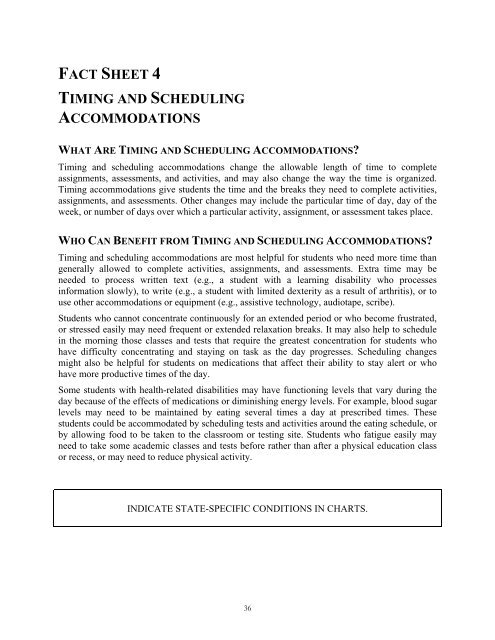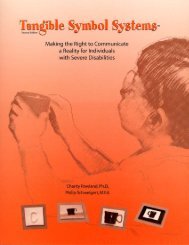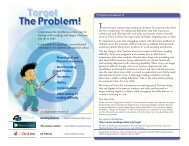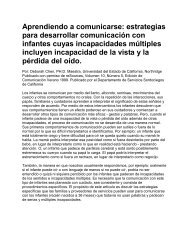ACCOMMODATIONS MANUAL - The Office of Special Education ...
ACCOMMODATIONS MANUAL - The Office of Special Education ...
ACCOMMODATIONS MANUAL - The Office of Special Education ...
Create successful ePaper yourself
Turn your PDF publications into a flip-book with our unique Google optimized e-Paper software.
FACT SHEET 4<br />
TIMING AND SCHEDULING<br />
<strong>ACCOMMODATIONS</strong><br />
WHAT ARE TIMING AND SCHEDULING <strong>ACCOMMODATIONS</strong>?<br />
Timing and scheduling accommodations change the allowable length <strong>of</strong> time to complete<br />
assignments, assessments, and activities, and may also change the way the time is organized.<br />
Timing accommodations give students the time and the breaks they need to complete activities,<br />
assignments, and assessments. Other changes may include the particular time <strong>of</strong> day, day <strong>of</strong> the<br />
week, or number <strong>of</strong> days over which a particular activity, assignment, or assessment takes place.<br />
WHO CAN BENEFIT FROM TIMING AND SCHEDULING <strong>ACCOMMODATIONS</strong>?<br />
Timing and scheduling accommodations are most helpful for students who need more time than<br />
generally allowed to complete activities, assignments, and assessments. Extra time may be<br />
needed to process written text (e.g., a student with a learning disability who processes<br />
information slowly), to write (e.g., a student with limited dexterity as a result <strong>of</strong> arthritis), or to<br />
use other accommodations or equipment (e.g., assistive technology, audiotape, scribe).<br />
Students who cannot concentrate continuously for an extended period or who become frustrated,<br />
or stressed easily may need frequent or extended relaxation breaks. It may also help to schedule<br />
in the morning those classes and tests that require the greatest concentration for students who<br />
have difficulty concentrating and staying on task as the day progresses. Scheduling changes<br />
might also be helpful for students on medications that affect their ability to stay alert or who<br />
have more productive times <strong>of</strong> the day.<br />
Some students with health-related disabilities may have functioning levels that vary during the<br />
day because <strong>of</strong> the effects <strong>of</strong> medications or diminishing energy levels. For example, blood sugar<br />
levels may need to be maintained by eating several times a day at prescribed times. <strong>The</strong>se<br />
students could be accommodated by scheduling tests and activities around the eating schedule, or<br />
by allowing food to be taken to the classroom or testing site. Students who fatigue easily may<br />
need to take some academic classes and tests before rather than after a physical education class<br />
or recess, or may need to reduce physical activity.<br />
INDICATE STATE-SPECIFIC CONDITIONS IN CHARTS.<br />
36





